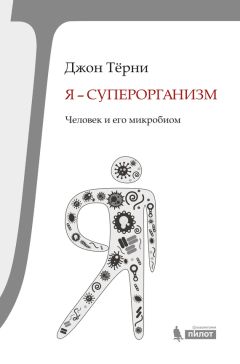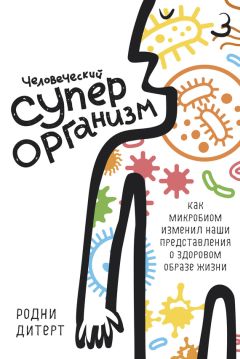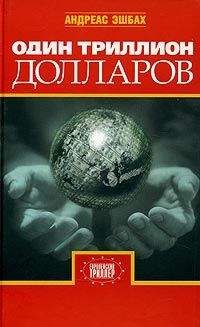Я – суперорганизм! Человек и его микробиом - Терни Джон
Minot, S., et al (2013). Rapid evolution of the human gut virome. Proceedings of the National Academy of Sciences, 110: 12450–12455.
Modi, Sheetal (2013). Antibiotic treatment expands the resistance reservoir and ecological network of the phage metagenome. Nature, 499: 219–223.
Moeller, Andrew, et al (2012). Chimpanzees and humans harbour compositionally similar gut enterotypes. Nature Communications, 3: 1179.
Moeller, Andrew, et al (2014). Rapid changes in the gut microbiome during human evolution. Proceedings of the National Academy of Sciences, Nov 3. doi: 10.1073/pnas. 1419136111.
Montgomery, Scott (1996). The Scientific Voice. Guilford Press.
Morrow, L., et al (2010). Probiotic prophylaxis of ventilator-associated pneumonia: a blinded, randomized, controlled trial. American Journal of Respiratory & Critical Care Medicine. 182: 1058–1064.
Naik, Shruti, et al (2012). Compartmentalized Control of Skin Immunity by Resident Commensals. Science, 337: 1115–1119.
Nakatsuji, Teruaki, et al (2013). The microbiome extends to subepidermal compartments of normal skin. Nature Communications, 4. Feb 5.
Nelson, David, et al (2012) Bacterial Communities of the Coronal Sulcus and Distal Urethra of Adolescent Males. PloS One, 7: e36298.
Nerlich, Brigitte, and Lina Hellsten (2009). Beyond the human genome: microbes, metaphors and what it means to be human in an interconnected post-genomic world. New Genetics and Society, 28: 19–36.
Noble, Denis (2006). The Music of Life: Biology Beyond Genes. Oxford University Press.
Norris, Vic, et al (2013). Hypothesis: bacteria control host appetites. Journal of Bacteriology, 195:411.
O’Malley, Maureen (2014). Philosophy of Microbiology. Oxford University Press.
Ogilvie, Lesley, et al (2013). Genome signature-based dissection of human gut metagenomes to extract subliminal viral sequences. Nature Communications, 3420.
Okada, H., et al (2010). The ‘hygiene hypothesis’ for autoimmune and allergic diseases: an update. Clinical & Experimental Immunology, 160: 1–9.
Paxson, Heather (2008). Post-Pasteurian cultures: The microbiopolitics of raw-milk cheese in the United States. Cultural Anthropology, 23: 15–47.
Petrof, E., et al (2013). Microbial ecosystems therapeutics: a new paradigm in medicine? Beneficial Microbes 4: 53–65.
Petrof, E., et al (2013). Stool substitute transplant therapy for the eradication of C. difficile infection: RePOOPulating the gut. Microbiome 1:3.
Pollan, Michael (2006). The Omnivore’s Dilemma: A Natural History of Four Meals. Penguin.
Pradeu, Thomas (2012). The Limits of the Self: Immunology and Biological Identity. Oxford University Press.
Pradeu, Thomas, and Edwin Cooper (2012). The danger theory: 20 years later. Frontiers in Immunology, 3: 287.
Pray, Leslie, et al (2012). The Human Microbiome, Diet and Health: Workshop Summary. Institute of Medicine, US.
Price, Lance (2010). The Effects of Circumcision on the Penis Microbiome. PloS One, 5: e8422.
Pride, David, et al (2012). Evidence of a robust resident bacteriophage population revealed through analysis of the human salivary genome. ISME Journal, 6: 915–926.
Ravel, J., et al (2011). Vaginal microbiome of reproductive-age women. Proceedings of the National Academy of Sciences. 108 Suppl 1:4680–7.
Relman, David (2012). The human microbiome: ecosystem resilience and health. Nutrition Reviews, 70: S2 – S9.
Relman, David, et al (2009). Microbial Evolution and Co-Adaptation – A Tribute to the Life and Scientific Legacies of Joshua Lederberg. National Academy of Sciences, US.
Richmond, Ben (2014). Cola-flavoured Genitals, and Other Potential Uses for Microbiome Hacking. http://motherboard.vice.com September 11.
Ridaura, V., et al (2013). Gut microbiota from twins discordant for obesity modulate metabolism in mice. Science, 341: 1241214.
Roach, Mary (2013). Gulp: Adventures in the Alimentary Canal. Oneworld.
Rook, Graham (2012). A Darwinian view of the Hygiene or ‘Old Friends’ hypothesis. Microbe, 7: 173–180.
Rook, Graham (2013). Regulation of the immune system by biodiversity from the natural environment: An ecosystem service essential to health. Proceedings of the National Academy of Sciences, 110: 18360–18367.
Rosebury, Theodor (1969). Life on Man. Secker and Warburg.
Sachs, Jessica Snyder (2007). Good Germs, Bad Germs: Health and Survival in a Bacterial World. Hill and Wang.
Saey, Tina (2014). Here’s the poop on getting your gut microbiome analysed. www.sciencenews.org June 17.
Salter, Susannah, et al (2014). Reagent and laboratory contamination can critically impact sequence-based microbiome analysis. BMC Biology, 12: 87.
Sanford, James, and Richard Gallo (2013). Functions of the skin microbiota in health and disease. Seminars in Immunology, 25: 370–377.
Scheuring, Istvan, and Douglas Wu (2012). How to assemble a beneficial microbiome in three easy steps. Ecology Letters, 15: 1300–1307.
Schluter, Jonas, and Kevin Foster (2012). The evolution of mutualism in gut microbiota via epithelial selection. PLoS Biology, 10: e1001424.
Schnorr, Stephanie, et al (2014). Gut microbiome of the Hadza hunter-gatherers. Nature Communications, 5: 3654.
Scott, Julia (2014). My No-Soap, No-Shampoo, Bacteria-Rich Hygiene Experiment. New York Times Magazine, May 22.
Seekatz, Anna, et al (2014). Recovery of the Gut Microbiome following Fecal Microbiota Transplantation. mBio, 5: e00893.
Shaikh-Lesko, Rina (2014). Visualising the ocular microbiome. The Scientist, May 12.
Shanahan, Fergus, and Eamonn Quigley, (2014). Modification of the gut microbiome to maintain health or treat disease. Gastroenterology, 146: 1554–1563.
Simons, Jake (2014). Biodesign: Why the future of our cities is soft and hairy. http://edition.cnn.com/2014/08/27/tech/innovation/biodesign-why-the-future-of-our-cities-is-soft-and-hairy.
Singer, Emily (2013). Our bodies, our data. Quanta Magazine online. October. http://www.simonsfoundation.org/quanta/20131007-our-bodies-our-data.
Singh, Nagendra, et al (2014). Activation of Gpr109a, receptor for niacin and the commensal metabolite butyrate, suppresses colonic inflammation and carcinogenesis. Immunity, 40: 128–139.
Smith, Mark, et al (2014). How to regulate faecal transplants. Nature, 506: 290–91.
Smith, Peter (2014). Is your body mostly microbes? Actually, we have no idea. Boston Globe, September 14.
Smith, Peter (2014). A new kind of transplant bank. New York Times, Feb 17.
Sommer, Felix, and Fredrik Bäckhed (2013). The gut microbiota – masters of host development and physiology. Nature Reviews Microbiology, 11: 227–238.
Song, Se Jin, et al (2013). How delivery mode and feeding can shape the bacterial community in the infant gut. Canadian Medical Association Journal, 185: 373–374.
Song, Se Jin, et al (2013). Cohabiting family members share microbiota with one another and with their dogs. eLife, 2: e00458.
Sonnenberg, Justin, et al (2004). Getting a grip on things: how do communities of bacterial symbionts become established in our intestine? Nature Immunology, 5:569–573.
Staley, James and Allen Konopka (1985). Measurement of in situ activities of nonphotosynthetic microorganisms in aquatic and terrestrial habitats. Annual Review of Microbiology, 39: 321–46.
Sterling, Bruce (2002). Tomorrow Now: Envisioning the Next Fifty Years. Random House.
Sullivan, et al (2011). Clinical efficacy of a specifically targeted anti-microbial peptide mouth rinse: targeted elimination of Streptococcus mutans and prevention of demineralization. Caries Research. 45: 415–428.




